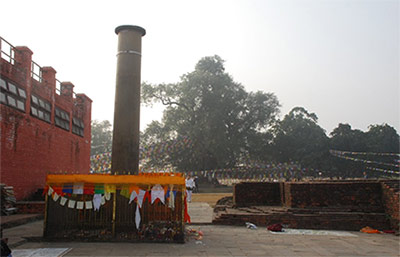History of Nepal
 Nepal’s history centers on the Kathmandu Valley. Most of the Nepali civilization here began in this culturally rich city. Historically, the city is illustrated by the range of forts, monuments, and temples that have made the country world famous. Legends say that the area around the valley was actually a large pond in the ancient era. The pond when got vacated, made way for human settlement here. Also, there is a belief that states the story that a knowledgeable Bodhisattva named Manjushree once came to Kathmandu and to prepare the valley for human settlement, he cut the gorge with his sword, drained out water. This region served as a rich ground for flourishing civilizations.
Nepal’s history centers on the Kathmandu Valley. Most of the Nepali civilization here began in this culturally rich city. Historically, the city is illustrated by the range of forts, monuments, and temples that have made the country world famous. Legends say that the area around the valley was actually a large pond in the ancient era. The pond when got vacated, made way for human settlement here. Also, there is a belief that states the story that a knowledgeable Bodhisattva named Manjushree once came to Kathmandu and to prepare the valley for human settlement, he cut the gorge with his sword, drained out water. This region served as a rich ground for flourishing civilizations.
Even the location saw the rule of successive dynasties which contributed to the thriving of the valley as the civilized city. Subsequent history of Nepal involved Buddhist history with the birth of Prince Siddhartha in Lumbini forest in the 6th century B.C. Born into the Sakya royal family of Kapilavastu, the prince later began walking on a path of meditation and enlightenment. He later became the Buddha, or ‘Enlightened One’.
 Later, around the 3rd century BC, the region saw the rise of the famous Mauryan emperor of India, Ashoka the Great. After getting ordained as a Buddhist, the mighty emperor visited Lumbini and erected an Ashokan pillar at the birthplace of the Buddha.
Later, around the 3rd century BC, the region saw the rise of the famous Mauryan emperor of India, Ashoka the Great. After getting ordained as a Buddhist, the mighty emperor visited Lumbini and erected an Ashokan pillar at the birthplace of the Buddha.
According to the legends, the king’s illustrious visit didn’t stop at Lumbini. Instead he visited the Kathmandu Valley and erected four stupas around Patan. There is no proven evidence of the stupas here, but still the location has the rich Buddhist essence.
Subsequent historical accounts showcase the waning of Buddhism and the resurrection of Hinduism with the arrival of Licchavi dynasty from North India in Nepal in 300 AD. It was during the rule of Licchavis that Nepal gained the cultural wealth of heritage temples in Old Kathmandu like Changu Narayan Temple. It is even believed that the original stupas of Bodhnath and Swayambhunath flourished under the Licchavi rule.
Licchavis were succeeded by Thakuris in 602 AD when Amsuvarman, the first Thakuri King succeeded his Licchavi father in law. The Thakuris consolidated the power to the north and south by marriage alliances in India and Tibet.
This was followed by the Malla dynasty which came to power around 1200 and ruled the country for over 550 years. The Mallas shaped up the religious and artistic expressions of Nepal. The introduction of dramatic temple chariot festivals (Indra Jatra), the creation of Kathmandu’s Kumari Temple is accredited to the Mallas. The traditions set by the dynasty are still followed by the people of Nepal and are a great regional cultural wealth.
Nepal’s history is not shrouded in mystery. Present day Nepal has vestiges of rich heritage that are still present in the form of world heritage sites, intricately carved temples, stupas, etc. Even travellers can develop the understanding of its rich history and heritage with a cultural tour to Nepal.












